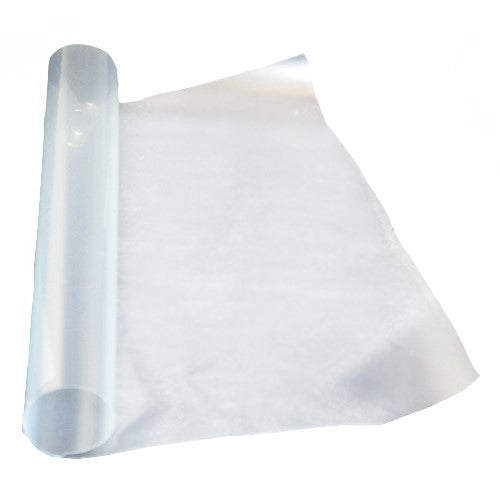You have no items in your shopping cart.
Vacuum bagging is worth the extra time and money when you have a part that needs to be low in weight and high in strength. Vacuum bagging provides an even pressure to the entire laminate. If done right, this will give the part a better fiber to resin ratio when compared to hand layup. It will also remove air bubbles creating a void free laminate.
There are several materials needed in a bagging schedule. These include peel ply and/or release film, breather/bleeder, vacuum bagging film and rubberized sealant tape.

Peel Ply is a woven fabric coated with a release agent that leaves a even textured surface. This surface minimizes prep time for secondary bonding on your part. Perforated/porous peel ply allows excess resin to seep through. A non-porous peel ply is used when it is not necessary for resin bleed but there is a need to get rid of volatiles and solvents. Peel ply can be used with or with out release film.
Release film comes in both porous and non-porous form. You need release film or peel ply so that the breather/bleeder and vacuum bag do not stick to your part. It acts like a barrier between them. Release film is similar to peel ply but it leaves a smooth finish instead. Release film also does not bleed as much as peel ply. It can be used between peel ply and the breather to lower the amount of resin that is absorbed by the fabric. This will make it more likely that you will be able to reuse the bleeder/breather fabric. Release film that is porous, has small pin holes that are equidistant from each other. Non-porous release film allows the resin to remain on the surface of the part which gives it a smooth finish. This smooth finish will be ready for paint.
Both release film and peel ply help keep foreign materials such as dust off the finished part.

Breather/Bleeder is a synthetic fiber material (like quilt filling fabric) that absorbs any excess resin from the laminate. It comes in several different thicknesses. Breather/bleeder controls the air flow as it goes through the bag as well. It should also be used where the vacuum fittings/port connects to the bag and laminate flanges. This is so that resin does not get sucked up into the vacuum. It acts as a resin trap.

Bagging film is what is used to make your vacuum bag. You will need it to be much larger than your laminate and also bigger than the area you put sealant tape on. It comes in various materials including nylon.

Sealant tape is a must. We do not recommend using masking or some other type of tape. It is used to close bagging film to the flange of the mold/part or to itself.
There are other vacuum bagging materials on the market but these are the ones used most often. You can achieve a great looking part with these.
You can read our post on the Vacuum Bagging Fittings HERE
Check out our website to see all of the vacuum bagging materials that we carry- HERE









